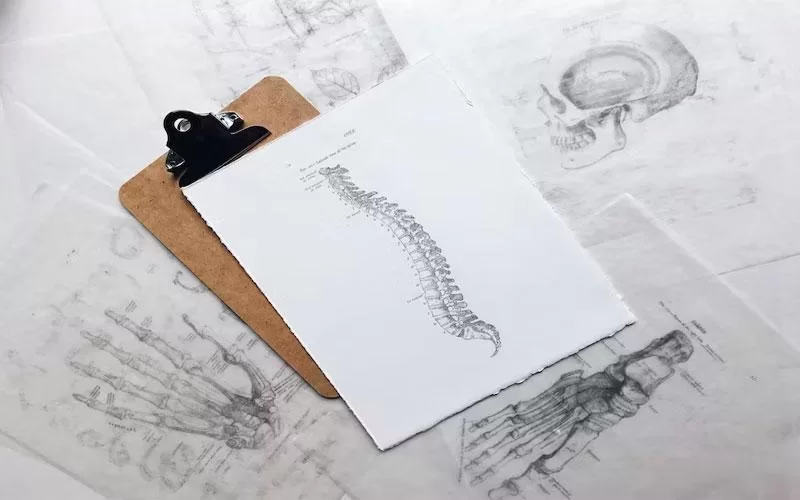
Spondylolisthesis affects people all over the world and is one of the more common back conditions. Fortunately, there are a range of treatment options to help reduce symptoms and help people lead a normal life. There are also surgical options that can try to cure the condition permanently if treatment proves ineffective.
In this article, we will demystify spondylolisthesis, from who can be affected by the condition to how it develops, and the chances of success of spondylolisthesis surgery.
What is Spondylolisthesis?
Spondylolisthesis is a condition where one of the bones (vertebrae) in your spine slips forward and comes into contact with the nearby nerves and even the spinal cord. This can occur anywhere along the spine but is most common in the lower back and the neck. The lower back is referred to as the lumbar region, while the neck is called the cervical region.
Spondylolisthesis can be very painful and can affect other areas of the body, not just the back. The pain can increase when a person stands or walks, especially with lumbar spondylolisthesis, and this pain can often subside when a person sits or leans forward.
Pain can spread to the buttocks or the thighs and can also cause a numb feeling, while other symptoms can include tight hamstrings. You may also experience a tingling sensation that spreads down the lower back and down one leg. This is known as sciatica and is an aggravation of the sciatic nerve. For some people, it causes no obvious symptoms and does not affect their daily life.
Is it the same as Spondylosis?
Spondylolisthesis and spondylosis can share common symptoms and both affect any part of the spine but they are not the same. Spondylosis occurs due to the deterioration of the cartilage and vertebrae in the spine, most common in the cervical region. This can cause chronic pain, although the pain can vary from person to person.
Cervical spondylosis causes pain in the neck and shoulders, as well as headaches, while lumbar spondylosis affects the lower back and can spread to the legs. This condition can also cause stiffness in the back, particularly in the mornings, making a person feel lethargic. In some cases, the deterioration of the vertebrae can lead to bone spurs that can impinge the nerves and spinal cord.
Spondylosis, including multilevel spondylosis, is typically a common part of aging, affecting over 50s, and many people do not experience symptoms.
Myths about Spondylolisthesis
Below are 7 myths about Spondylolisthesis and the facts that debunk them.
Spondylolisthesis will always cause pain
Spondylolisthesis does not always cause pain, regardless of where it occurs in the spine. Some individuals experience no pain or symptoms whatsoever and likely do not even realize they have the condition. Sometimes, a person only discovers they have it when having a medical scan for another issue.
Spondylolisthesis is caused by bad posture
This is a myth, although bad posture can contribute to a range of spinal issues and conditions. The cause of spondylolisthesis is usually deterioration or an abnormality in the spine, this could also be a genetic issue. Other causes can be spinal traumas such as fractures, osteoarthritis, or degenerative diseases.
Only older people get Spondylolisthesis
It is true that spondylolisthesis is more common in older people as it is associated with long-term deterioration of the vertebrae. However, young adults can also develop the condition if their spine is subject to lots of wear and tear, possibly from playing contact sports. An injury could also cause a stress fracture that could develop into spondylolisthesis.
Spondylolisthesis can be seen on a person’s back
Spondylolisthesis is not visible externally and a person will not be able to see lumps or deviations in their spine. Spondylolisthesis can only be seen with an X-ray or MRI scan.
Anyone with Spondylolisthesis needs surgery
Not everyone who has spondylolisthesis requires surgery as there are a range of symptoms such as painkillers and physical therapy that can provide effective relief. Changes in a person’s lifestyle to improve their diet, exercise more, and quitting smoking and drinking alcohol can also help the spine heal naturally.
Surgical procedures are only recommended if treatments have failed to reduce symptoms, often considered a last resort by medical professionals.
You should avoid exercise if you have Spondylolisthesis
Gentle exercise is great for overcoming a range of spinal conditions, including spondylolisthesis. Swimming, walking, and cycling are all recommended exercises for anyone who has persistent back pain.
However, exercises that are overly strenuous or contact sports can cause further damage. Anyone with back issues should consult with a physical therapist to devise a workout plan that can strengthen the muscles in their back without causing further deterioration of the vertebrae or cartilage.
There is no way to prevent Spondylolisthesis
Some individuals may develop this congenitally and can be unavoidable but for most people maintaining good spine health can significantly reduce the chances of developing the condition.
For example, the chances of developing spondylolisthesis can be reduced if you:
- Eat a balanced diet to maintain a healthy weight,
- Practice good posture, especially when working at a desk
- Exercising regularly without exerting too much pressure on your spine
- Stopping smoking and avoiding drinking alcohol regularly
- Taking part in yoga or pilates classes to strengthen your back
Spondylolisthesis Surgery: Success Rates
It is difficult to put an exact percentage on the number of surgical procedures for this condition that are successful, although studies show the figure is around 60%. The success of spondylolisthesis can often depend on an array of factors that may include:
- The skill and experience of the surgeon and medical team
- The type of surgical procedure
- How severe the condition is
- The overall health of the individual
- Any complications following surgery
- Whether the person actively participates in rehabilitation
Following surgery, it is always important to follow medical advice, rest accordingly, and follow the plan set out by a physical therapist.